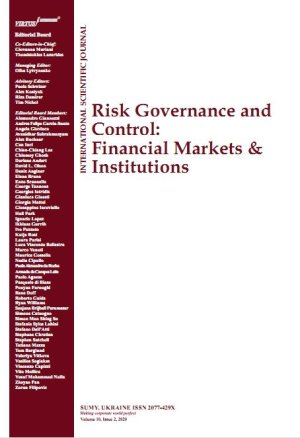
WHY PROTECT FINANCIAL MARKETS?
Download This ArticleAbstract
The purpose of this paper is to estimate the benefits from adopting close-out netting to decrease the exposure to counterparty risk across the world markets and to establish the additional benefits from central counterparties towards decreasing counterparty risk. The novelty of the approach is to estimate a figure for counterparty credit risk (CCR) grouping together most of the financial transactions that generate counterparty risk and to analyze the benefit of netting possibilities in reducing the overall risk exposure, using three different scenarios. In the first scenario, counterparty credit risk is calculated assuming that no close-out netting is possible across different contracts. The second scenario assumes bilateral negotiations and netting across contracts. The third scenario contemplates the existence of a
central counterparty as the center of transactions. Benefits from netting and central counterparty are assessed by comparing the risk exposure in each scenario. Results from the model show that netting provides a decrease in world counterparty risk of over $17 trillion. Netting is thus a powerful tool available in the world markets to manage counterparty risk while decreasing systemic risk, and as such policies to facilitate and standardize netting procedures across different jurisdictions should be encouraged. Moreover, results show that the use of central counterparties for settling the outstanding contracts would additionally decrease CCR by over $2 trillion.
Keywords: Counterparty Credit Risk, Central Counterparty, Close-Out Netting, Systemic Risk
How to cite this paper: Carapeto,M., & Acosta, M. (2012). Why protect financial markets? Risk Governance and Control: Financial Markets & Institutions, 2(4), 25-39. https://doi.org/10.22495/rgcv2i4art3



















